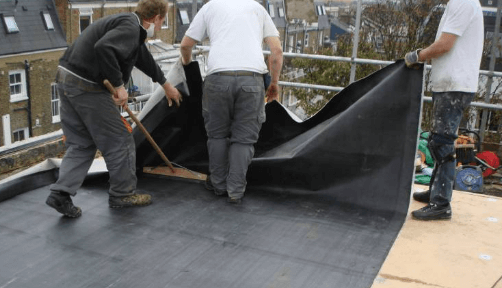You are about to learn how to install a rubber roof. A rubber roof protects your home against the rain, snow and heat. This will allow you to keep your home dry. There are many benefits that you will gain if you choose to install a rubber roof. For example, a rubber roof will not cost a lot of money to install and maintain. You will not have to spend a lot of money to replace the roof of your house. It will provide you with good protection for your house. It is important to make sure that you get a good quality rubber roof for your house.
What Is Rubber Roofing?
Rubber roofing is an inexpensive alternative to traditional asphalt shingles that are typically found in new construction. Many people are attracted to the fact that these roofs are water-resistant and durable, and they can easily last up to 50 years. They also tend to be less expensive than traditional roofing options. These factors make rubber roofing a good choice for homeowners who want to upgrade the look of their homes.
How Does Rubber Roofing Work?
How does it work? Rubber roofing consists of three main components: a substrate, a coating, and a layer of adhesive. The substrate is usually an organic material such as a felt or fiberglass mat. The coating is typically a polymer-based material that is applied to the substrate to help protect it. The adhesive is the layer that secures the rubber roofing to the building. The adhesive is typically a liquid compound that dries to form a solid bond between the rubber roofing and the building’s surface. The rubber roofing must be installed correctly in order for the adhesive to work properly. Otherwise, the roofing could peel off and/or crack during use.
The Benefits of Rubber Roofing rolls
Why should you consider rubber roofing? Here are the top five reasons for choosing it over traditional asphalt roofing. 1. Rubber roofing requires no maintenance. Unlike asphalt, which must be replaced every seven to ten years, rubber roofing can last up to 30 years or longer. 2. It can withstand almost any kind of weather. Rubber roofing can protect your home from virtually all forms of weather, including hail, wind, tornadoes, snow, and extreme temperatures. 3. It requires no special training to install. Rubber roofing can be installed quickly by a professional roofer, saving you time and money. 4. It protects you from roof leaks. Asphalt roofs tend to leak due to temperature and pressure changes. Rubber roofs can withstand
The Costs of Rubber Roofing rolls
While the cost of a rubber roofing system is much higher than that of a traditional asphalt roofing system, it provides many more benefits over a metal roofing system. Because of its durability, rubber roofing is far better able to withstand strong winds and other forms of weather damage. In addition to that, it allows for longer life cycles (more than 30 years), a wider variety of colors and textures, and a lower maintenance cost.
How Do I Install Rubber Roofing rolls?
If you’re installing a rubber roofing system, you need to be sure to install the system correctly and use the correct tools. Don’t overdo it and you shouldn’t need to call in a pro. But if you’re not careful you can end up tearing the roof off your home. Make sure you know exactly what you’re doing. Check the manufacturer’s installation instructions and follow them carefully. Remember, you’re making a big investment in your home and its roof.
How Do You Know If Rubber Roofing Is Right For You?
If you’re looking to purchase a new roof for your home, you may be wondering whether or not it’s worth it to consider a rubber roof. Rubber roofs offer a number of benefits over traditional asphalt roofs, including greater durability and water resistance, along with better insulation properties. Rubber roofs tend to last a long time, and often come with warranties of 20 to 25 years. Because they’re typically made from a synthetic material, they’re lighter than traditional asphalt roofs and can be installed at a faster pace, saving you money and time.
Conclusion
In conclusion, I’m a big fan of rubber roofing as a long-term solution for a commercial building that’s prone to high water damage. It’s relatively inexpensive, but will last decades. Rubber roofs are also less susceptible to extreme heat and cold than tile roofing. It will definitely reduce your energy costs. This is a good roofing choice for commercial buildings that need roofing that will last longer than 10 years and that has a lot of water exposure.
FAQs
1.What are some common problems with rubber roofing?
Some common problems with rubber roofing are: peeling and cracking.
2. How long will it take to install a rubber roof?
It will take anywhere from one to three days to install a rubber roof.
3. Is rubber roofing more expensive than other roofing materials?
Yes, it is more expensive than other roofing materials.
4. What should I look for when buying rubber roofing?
Look for a roll of rubber roofing that is at least two inches thick.



